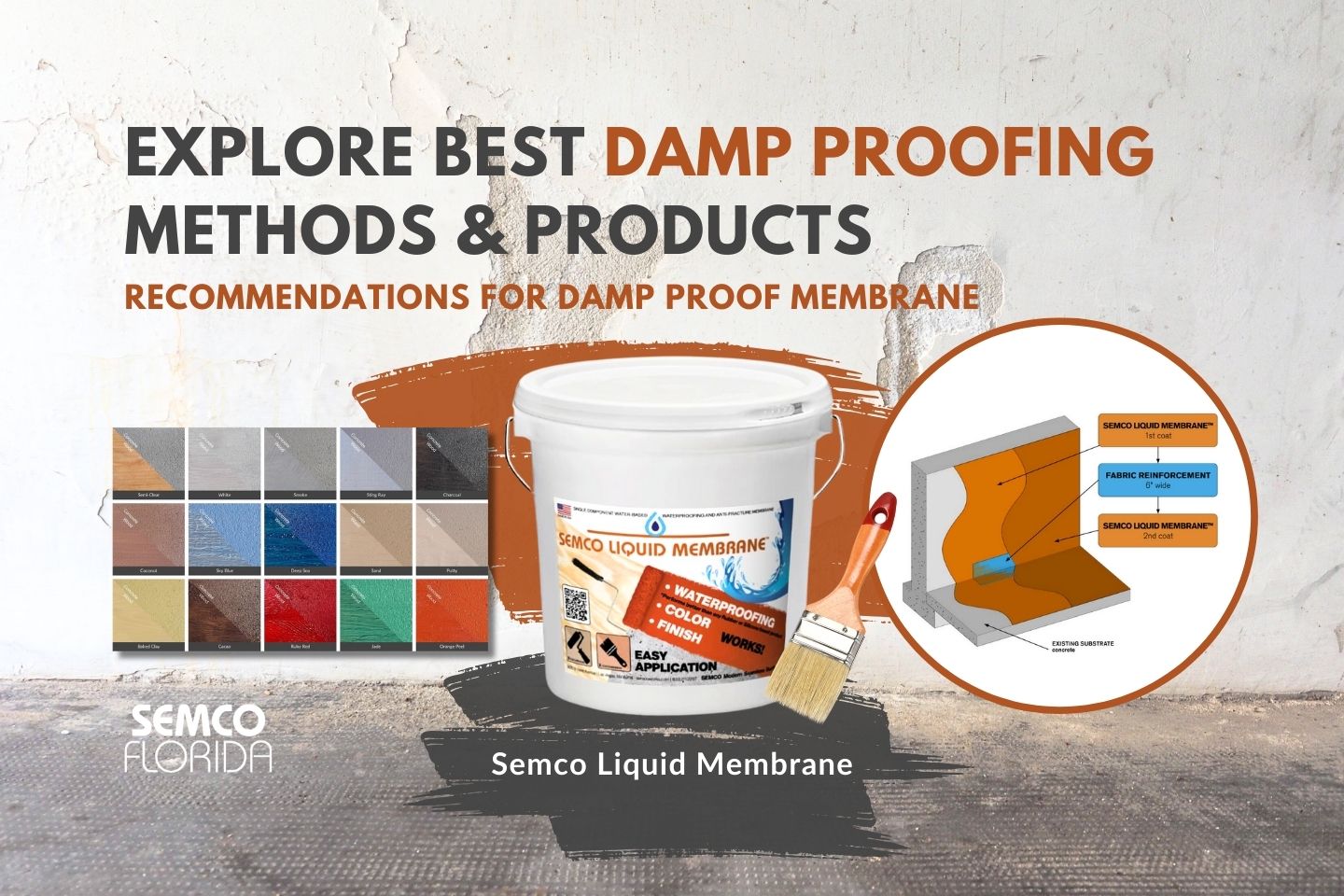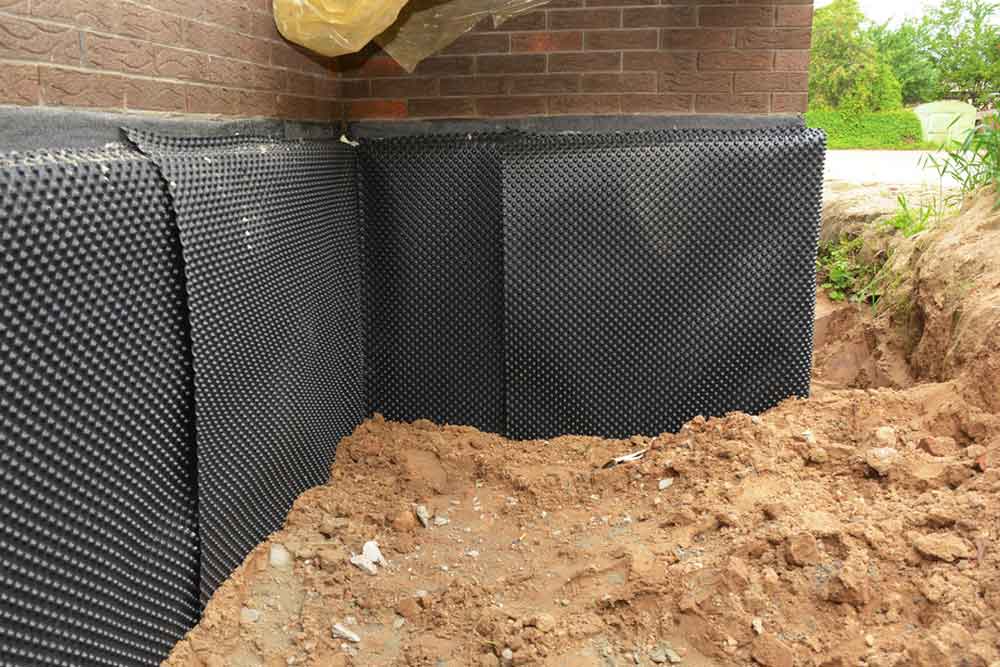Exploring the Different Strategies and Solutions for Effective Damp Proofing
Moisture in structures positions considerable obstacles to both structural integrity and interior air top quality. Different strategies and remedies have actually arised to combat this pervasive problem. From typical damp-proof membranes to innovative chemical treatments, each technique offers distinct advantages. Comprehending these choices is essential for effective moisture control. Nevertheless, selecting the ideal option depends on specific structure problems and requirements, prompting further exploration into one of the most effective damp proofing techniques readily available.
Understanding the Reasons For Wetness
Wetness can develop from various sources, understanding these reasons is vital for reliable removal. Typically, dampness originates from 3 primary resources: increasing damp, passing through moist, and condensation. Rising wet occurs when groundwater takes a trip up-wards through permeable materials, such as block or stone, commonly because of a lack of an efficient barrier (damp proofing newcastle). Passing through damp is normally triggered by exterior aspects, consisting of roof leaks, damaged gutters, or harmed wall surfaces, permitting water to infiltrate a residential or commercial property. Condensation, on the various other hand, arises from excess dampness airborne, commonly intensified by poor ventilation and temperature distinctions, resulting in water beads forming on surfaces. Recognizing these underlying concerns is important, as each kind of dampness needs a customized approach for remediation. Proper analysis helps in figuring out the most reliable remedies, ultimately guarding the architectural honesty of a building and boosting interior air high quality
Traditional Damp-Proof Membranes

Chemical Damp-Proofing Solutions
Chemical damp-proofing remedies use an ingenious technique to stop moisture intrusion in buildings. These methods generally involve the application of liquid chemicals that penetrate masonry and create a barrier against climbing wet. Generally used chemicals include silanes, siloxanes, and various other water-repellent representatives that respond with surface area products to develop a hydrophobic layer.The application process generally requires exploration holes right into the walls, injecting the chemical solution, and allowing it to cure. This technique is especially helpful for older frameworks where typical damp-proof membrane layers may be impractical. Furthermore, chemical damp-proofing can be less disruptive and a lot more cost-effective than comprehensive renovation projects.While reliable, these options depend upon appropriate application and environmental conditions for peak efficiency. Normal maintenance and tracking are vital to guarantee the long life of the damp-proofing treatment. In general, chemical damp-proofing stands for a functional option for securing buildings against moisture-related damages
Tooth Cavity Wall Surface Building Strategies
Cavity wall building and construction methods supply various benefits, specifically in moisture control and energy performance. By incorporating an air space in between two layers of stonework, these walls successfully mitigate water ingress while boosting insulation. This mix not only secures frameworks from dampness however likewise contributes to lowered power usage.
Advantages of Cavity Wall Surfaces
When thinking about effective wet proofing approaches, the advantages of dental caries wall surfaces stand apart plainly. Dental caries wall surfaces include 2 separate layers, producing an air void that properly reduces wetness penetration. This style decreases the risk of wetness, as the external wall surface acts as a barrier against rain and water ingress. Additionally, tooth cavity walls enhance thermal insulation, which adds to energy efficiency by decreasing warm loss. They additionally give sound insulation, aiding to develop a quieter indoor atmosphere. Additionally, the air void enables air flow, which helps in wetness control and decreases the likelihood of mold development. These benefits not only improve the general convenience of a structure however additionally add to its long life and architectural integrity.
Wetness Control Techniques
Reliable moisture control methods are crucial in dental caries wall construction to ensure long-lasting protection against wetness. One primary approach involves the consolidation of weep openings, which facilitate water drain from the dental caries, preventing build-up. In addition, making use of breathable membrane layers can assist take care of moisture degrees while permitting trapped vapor to get away. Correct placement of insulation is likewise important, as it should not obstruct water drainage courses. Guaranteeing that the external fallen leaves of the cavity wall are built with waterproof products boosts overall toughness. Regular maintenance checks are necessary to recognize any kind of blockages or damages early, protecting the framework's stability. Eventually, a combination of these methods develops a robust defense here against dampness breach in cavity walls.
Insulation and Energy Effectiveness
Insulation plays a vital role in improving energy effectiveness within dental caries wall surface construction. By incorporating insulating materials, these walls develop a thermal obstacle that minimizes heat loss and reduces energy consumption. Efficient insulation not just assists keep a secure interior temperature level but also reduces the danger of dampness, as it avoids condensation within the wall cavity. Numerous strategies, such as the usage of inflexible foam boards or mineral woollen, can be utilized to achieve ideal insulation performance. In addition, appropriate installation is important to assure that voids and voids are lessened, which can or else jeopardize energy effectiveness. Inevitably, a well-insulated cavity wall surface contributes greatly to overall sustainability and reduces home heating and cooling expenses for house owners.
Exterior Damp Proofing Methods
Exterior damp proofing approaches are necessary for safeguarding frameworks from wetness seepage. 2 efficient techniques consist of the application of water resistant membranes and the installation of French drains pipes. These solutions assist minimize water build-up and preserve the stability of buildings.
Waterproof Membrane Layer Application
While numerous methods exist for stopping moisture access, the application of water-proof membranes remains a highly reliable external moist proofing strategy. These membranes are generally made from materials such as polyethylene, rubber, or changed bitumen, supplying a durable obstacle versus water infiltration. The installment procedure entails applying the membrane to the external surfaces of wall surfaces or structures, guaranteeing total coverage to stop leakages. Correct adhesion and sealing at joints are critical to making the most of efficiency. Water-proof membrane layers can be applied in different types, consisting of liquid finishings and sheet membranes, enabling adaptability based upon the details needs of the framework. This approach not just protects buildings from moisture however additionally enhances their longevity and structural stability.
French Drainpipe Installment
One effective technique for handling groundwater and protecting against moisture build-up around a structure's foundation is the setup of a French drain. This drain system contains a trench filled with gravel and a perforated pipe that redirects surface water far from the structure. Proper setup needs careful planning, guaranteeing that the drain slopes away from the framework to promote optimal water flow. Additionally, the location of the drainpipe is essential; it needs to be placed in locations vulnerable to pooling or excess wetness. Regular maintenance, consisting of clearing up debris from the gravel and guaranteeing the pipe continues to be unblocked, is crucial for lasting efficiency. Ultimately, a well-installed French drain can considerably reduce the danger of water-related issues in cellars and structures.
Inside Waterproofing Approaches
Inside waterproofing methods are vital for safeguarding a structure's interior from dampness seepage and prospective water damage. These techniques generally include the application of specialized products and techniques developed to develop a dampness barrier within the structure. One usual technique is using water resistant layers or sealers on walls and floorings, which avoid moisture from penetrating surfaces.Additionally, mounting interior drainage systems, such as sump pumps, can properly take care of water buildup in cellars and creep areas. One more technique entails using vapor barriers, which are installed to hinder moisture movement from the ground into living spaces.Moreover, dealing with any kind of splits or gaps in walls or foundations with suitable sealants guarantees a complete defense against water breach. By implementing these interior waterproofing strategies, homeowner can significantly reduce the danger of mold growth, structural damage, and other moisture-related problems. Correct implementation of these strategies is important for long-term protection and building honesty.
Normal Upkeep and Assessment Practices
Routine maintenance and evaluation methods are essential for assuring the lasting performance of moist proofing options in any type of building. Routine checks make it possible for homeowner to determine very early indications of wetness invasion, such as peeling paint, mold growth, and musty smells. These indications can signify underlying concerns that call for prompt attention.Inspections need to be carried out at the very least annually, concentrating on at risk locations like basements, crawl spaces, and outside walls. Throughout these analyses, homeowner ought to take a look at sealants, drain systems, and air flow to confirm they work correctly.Additionally, preserving downspouts and rain gutters is essential, as blocked systems can lead to water buildup near the structure. Executing a routine maintenance schedule, along with prompt fixings, can considerably extend the life-span of moist proofing actions and safeguard the architectural honesty of the structure. Proactive steps inevitably add to the total health and wellness of the living atmosphere.
Often Asked Inquiries
The Length Of Time Does Damp Proofing Typically Last?
The duration of moist proofing efficiency differs, usually lasting in between 20 to half a century. Factors such as application top quality, ecological problems, and maintenance techniques considerably influence the durability of the wet proofing treatment.

Can I Damp Proof My Home Myself?
The individual pondered the usefulness of DIY damp proofing. With correct research study and the right products, it is feasible. They also recognized the relevance of specialist support to assure lasting performance and stop future problems.
What Are the Indications of Ineffective Damp Proofing?
Indicators of ineffective moist proofing consist of persistent stuffy odors, noticeable mold growth, peeling off paint, wet patches on walls, and wood degeneration - mould removal newcastle. Homeowners must attend to these problems without delay to stop further damage and wellness concerns
Does Damp Proofing Affect Indoor Air Quality?

Just How Much Does Professional Damp Proofing Expense?
Professional moist proofing prices vary significantly, generally varying from $1,000 to $5,000 depending on the residential property's size, the degree of the wet issue, and selected approaches. Each situation calls for a tailored evaluation for accurate rates. Typically, dampness stems from three primary resources: increasing damp, passing through moist, and condensation. When thinking about efficient moist proofing methods, the benefits of dental caries walls stand out plainly. External moist proofing methods are essential for protecting structures from dampness infiltration. While numerous techniques exist for avoiding dampness ingress, the application of water resistant membranes stays a very effective outside damp proofing method. Indicators of ineffective wet proofing include consistent musty smells, noticeable mold growth, peeling off paint, damp patches on walls, and timber degeneration.
Comments on “Fighting indoor moisture through mould removal newcastle: What really works?”